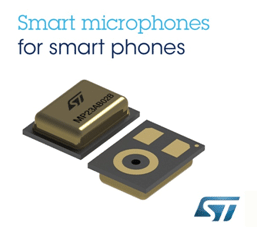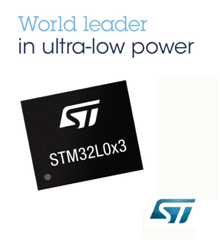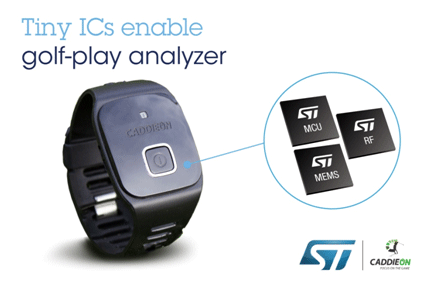
The year 2015 looks likely to be a mixed bag of fortunes. Forecasts by various analysts show contrasting views on where the market will go. Even among industry players themselves, opinions differ. Generally, growth will be tempered by soft market conditions. Hence optimism is found mostly in new applications as well as enhanced applications for existing products.
The relatively mature smartphone is still the focus of continuous enhancements and,as a result,is still a major growth driver. Just within the MEMS segment alone, smartphones first drove demand for accelerometers and gyroscopes, then they drove adoption of magnetometers.Today, smartphones are driving the growth of MEMS microphones. From a single MEMS microphone used for basic phone function, valuable new features such as noise cancellation and improved voice recognition have pushed the number of microphones for each smartphone to three. YoleDeveloppement expects the market for MEMS microphones to reach $1.65B in 2019.
Another likely beneficiary of smartphonegrowth is touch and proximity sensors, where increasing sophistication of the phone has driven the touch screen to new levels of intelligence. Proximity sensors now allow hovering actions, similar to the mouse rollover that highlights choices for more accurate selection. ST has also developed a technology that recognizes multiple independent touch points on the screen, opening the possibility for more complex interactions and applications to be developed for the smartphone.
The Internet of Things, on the other hand, is a whole new ball game. Taking advantage of the existing Internet and connectivity infrastructure, the IoToffers infinite possibilities; in fact, the “Things” in the Internet of Things can be just about ANY thing.
These are usually standalone devices, monitoring or collecting data and, of course,using the internet to move, analyze, or share information.A thing could be something nearby, such as a fitness monitor worn by a user or it could be something distant, such as a weather monitor set up halfway across the world. To operate, these thingsshare the need for a few basic components: sensor technology, wireless connectivity, smart power, and a microcontroller brain to run all the components together as a single smart device.
Pundits have predicted more than 50 billion things connected to the internet by the end of 2020. Those predictions will translate into significant demand for various types of sensors, wireless connectivity, power-related components, and microcontrollers.

A major–and perhaps the most market-ready– segment of the IoT is wearables, with applications from fitness,industrial, military, infotainment to healthcare. The growth of wearables is greatly supported by the smartphone which currently has an estimated global user base of 1.7 billion, approximately 1 in 4 of the world’s population and is expected to reach a third by 2018.[1]Smartphones are the default connection hub for wearable devices to carry out the role of interface, control, data logging and, of course, the actual connection to the internet.
The building blocks for wearables are somewhat similar to IoT but with an emphasis on technologies for miniaturization and ultra-portability; wearables need to be small and light enough to carry around all day and run on very low power. The rapid adoption of wearables is driving growth for ultra-low power microcontrollers, tiny sensor modules, highly efficient power management chips, and low-power wireless connectivity.

ST has successfully extended its market leadership in MEMS and sensors for the consumer and mobile segments to the wearables market[2]and has combined that success with its strong, broad portfolio of products and technologies into leadership for the other key technologies.
Microcontrollers are seeing good growth, from these new applications. The 32-bit ARM® Cortex® architecture that provides the instruction set ST has adopted for its STM32 family has enabled ST to develop among the industry’s largest portfolios of 32-bit microcontrollers, covering every possible need from ultra-low power to the industry’s highest-performance devices with a broad range of features across the entire cost spectrum.
To further simplify adoption and development, ST has introduced the STM32 Open Development Environment giving engineers modular access to various tools for the design and integration of components for sense, control, connectivity, power, audio or any other function as needed to support innovation and rapid prototyping.
This creates an end-to-end open modular architecture for the ARM Cortex-M environment, which we believe will further drive growth as it simplifies and speeds up product creation. Complementing the STM32 Open Development Environment, ST has also launched its Open.MEMS Program to encourage broad use of MEMS and sensors by its customers and open-community developers. The program simplifies single-user licensing and makes freely available to licensees the drivers, middleware and application software of the market-leading MEMS solutions from ST. These complementary programs will be particularly valuable to developers of IoT and wearable devices as both demand quick turn-around times for designs incorporating microcontrollers and sensors.

The year 2015 and beyond are promising and challenging. Looking at the macroeconomic environment of Asia, according to E&Y, there are already 525 million people in Asia who are middle class and this figure will grow by another three billion in the next two decades.[3]
The rise of this massive Asian middle class demographic is running head-oninto the always-on-and-connected lifestyle and culture. Demand from this tech-savvy group will be the engine that drives innovation and growth for at least a generation to come.Thus, the IoT will thrive in Asia, thanks to this demographic group.
[1]Worldwide Smartphone Usage to Grow 25% in 2014 – http://www.emarketer.com/Article/Worldwide-Smartphone-Usage-Grow-25-2014/1010920
[2] IHS MEMS & Sensors for wearables report 2014
[3]http://www.ey.com/GL/en/Newsroom/News-releases/News_By-2030-two-thirds-of-global-middle-class-will-be-in-Asia-Pacific






